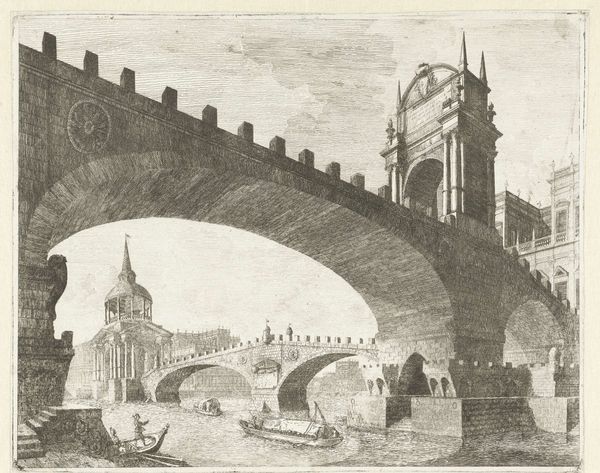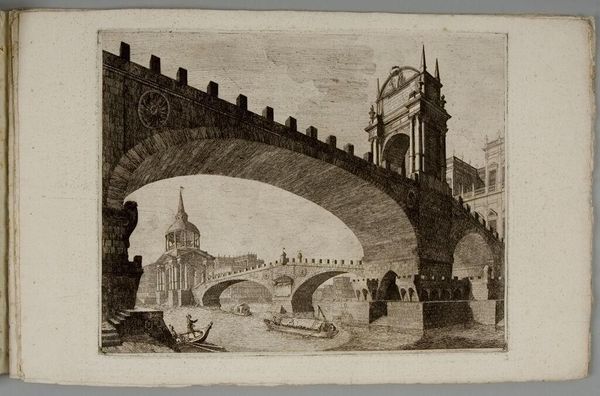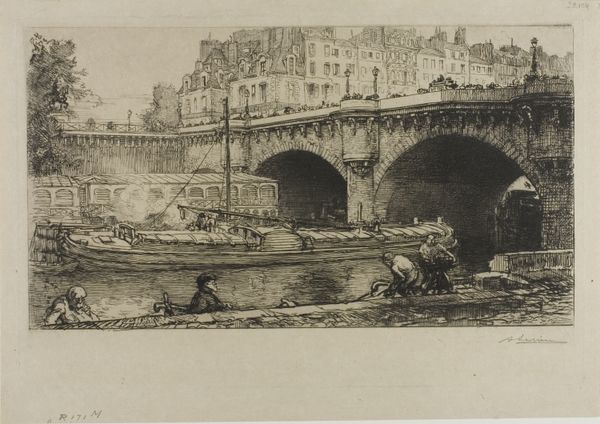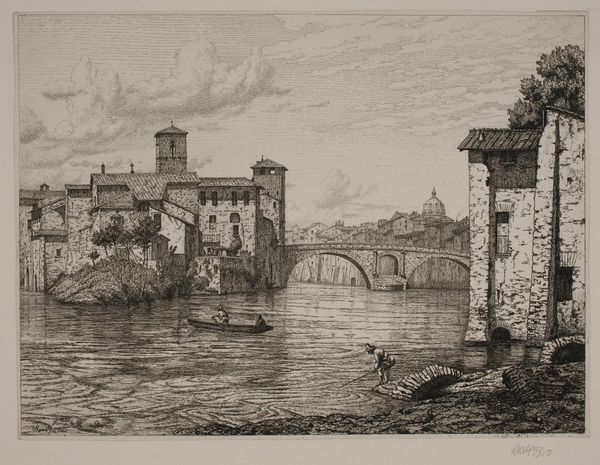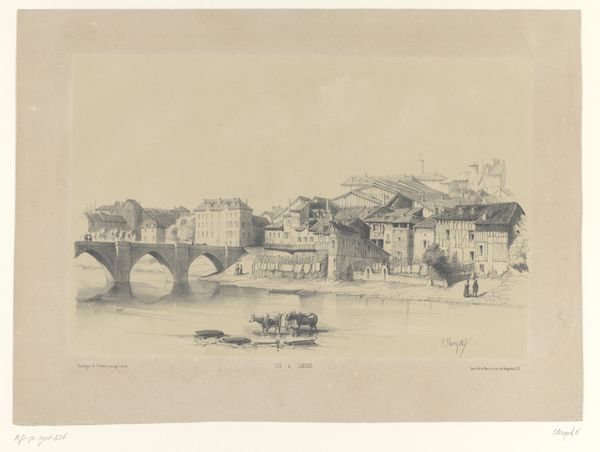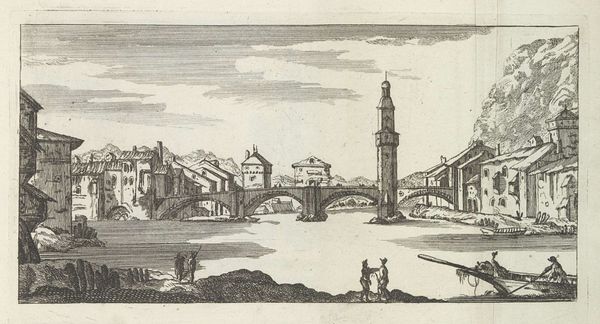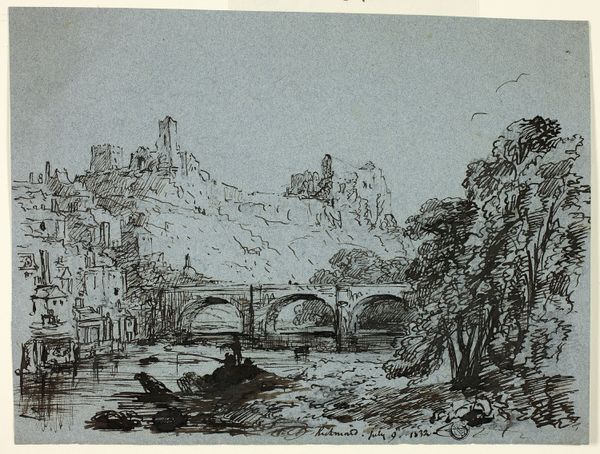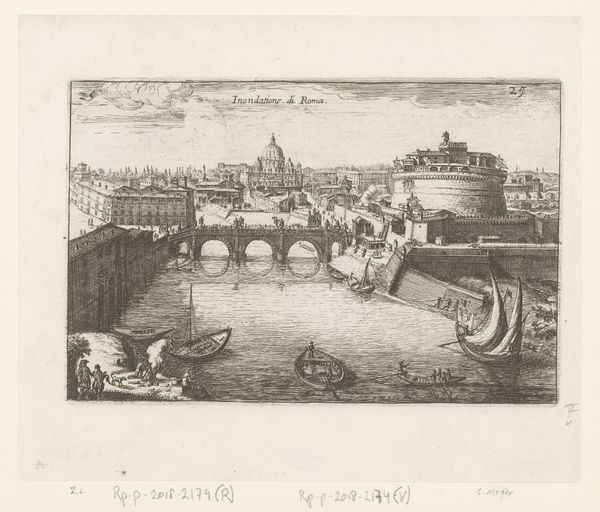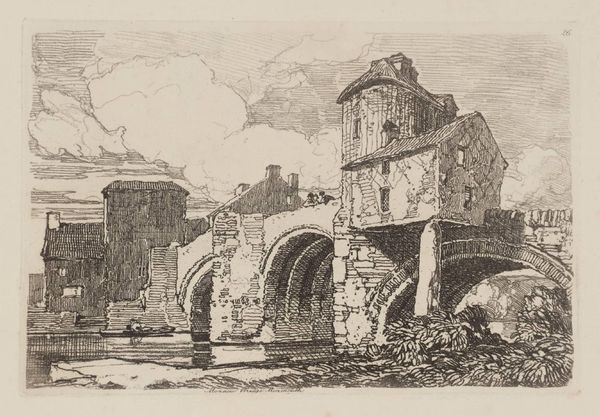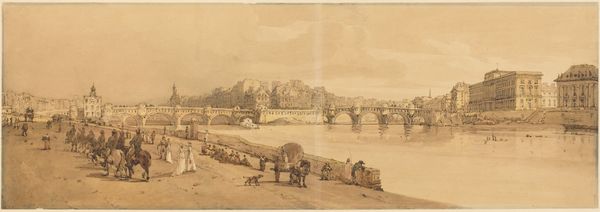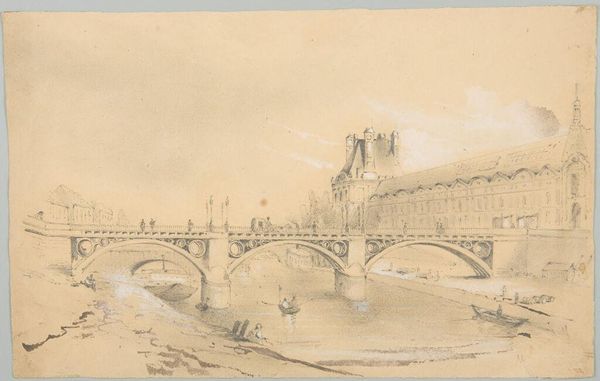
Dimensions: support: 270 x 340 mm
Copyright: CC-BY-NC-ND 4.0 DEED, Photo: Tate
Curator: John Varley's "The Ouse Bridge, York" presents a fascinating look at early 19th-century urban life. Editor: It’s quite somber. The monochromatic wash gives it a muted, almost ghostly quality. The lines and shapes, though simple, suggest a complex interplay of light and shadow. Curator: Absolutely. The materiality of the drawing, the paper itself, the choice of wash, speaks to a period of expanding paper production and artistic exploration of the urban environment. The bridge was crucial for trade and transport. Editor: Yes, but notice how Varley uses the bridge's arches to frame the bustling river scene. It's a clever compositional trick, drawing the eye into the heart of the painting. Curator: I agree. One sees laborers and tradesmen going about their tasks. It gives us insight into the social fabric of York at that time. Editor: It's interesting how he captures that atmosphere using such limited means. Curator: Indeed. Thinking about the materials used and how they reflect the societal context enhances our comprehension. Editor: And by focusing on the form, we gain access to the artist’s vision and the scene’s emotional core.
Comments
tate 6 months ago
⋮
http://www.tate.org.uk/art/artworks/varley-the-ouse-bridge-york-t09396
Join the conversation
Join millions of artists and users on Artera today and experience the ultimate creative platform.
tate 6 months ago
⋮
In this night scene, Varley used black chalk to outline the image. Forms were then filled in with a softer black chalk that has been smudged with a finger or stump. Varley seems to have reworked some of these areas further by going over them with a wet brush to disperse the pigment particles. The drawing has been subtly heightened with what initially appeared to be white chalk. However, closer inspection revealed that it is a white gouache that has been applied virtually dry. Ultraviolet examination revealed that Varley, like Lewis, was using the newly discovered zinc white. Gallery label, August 2004
